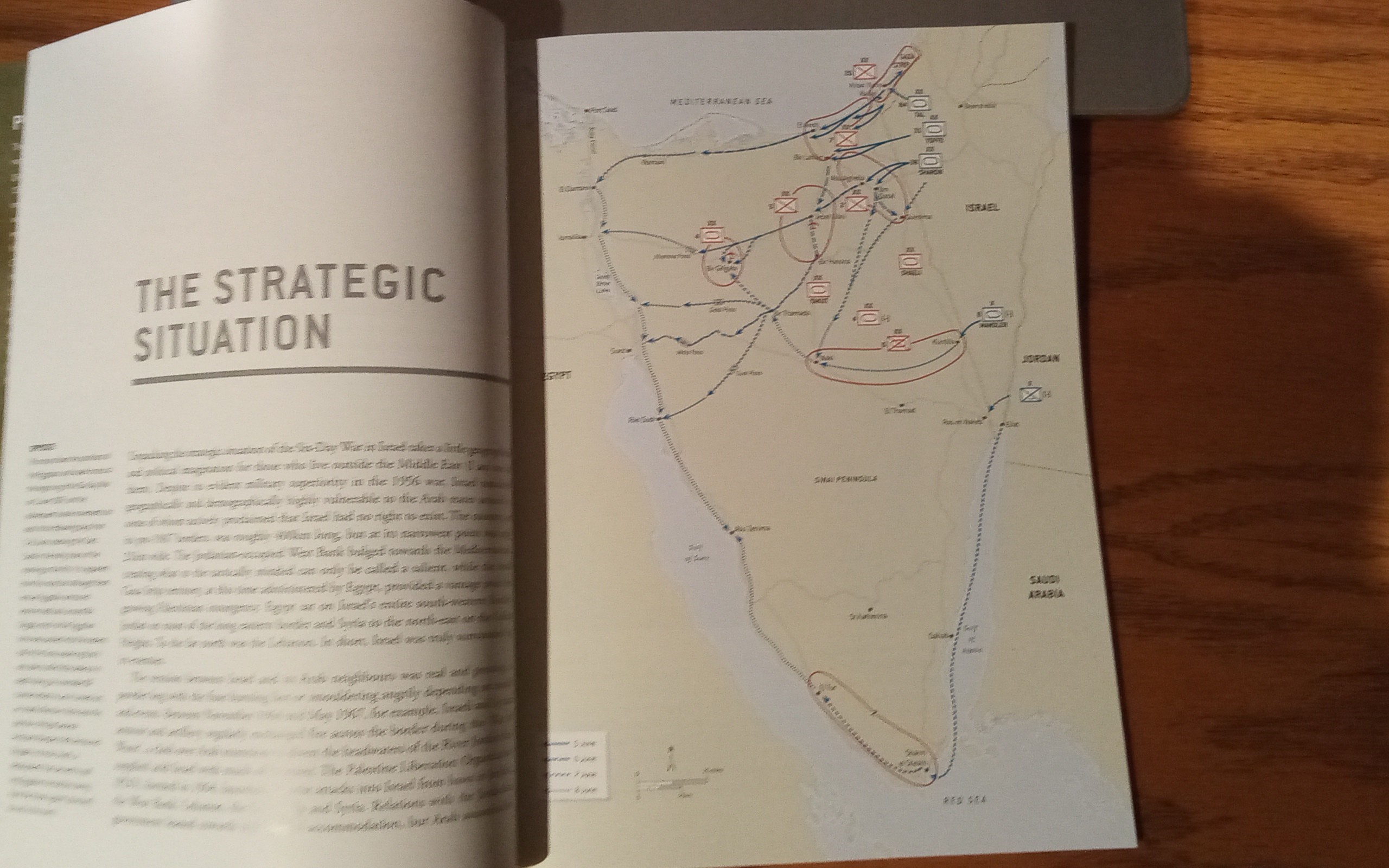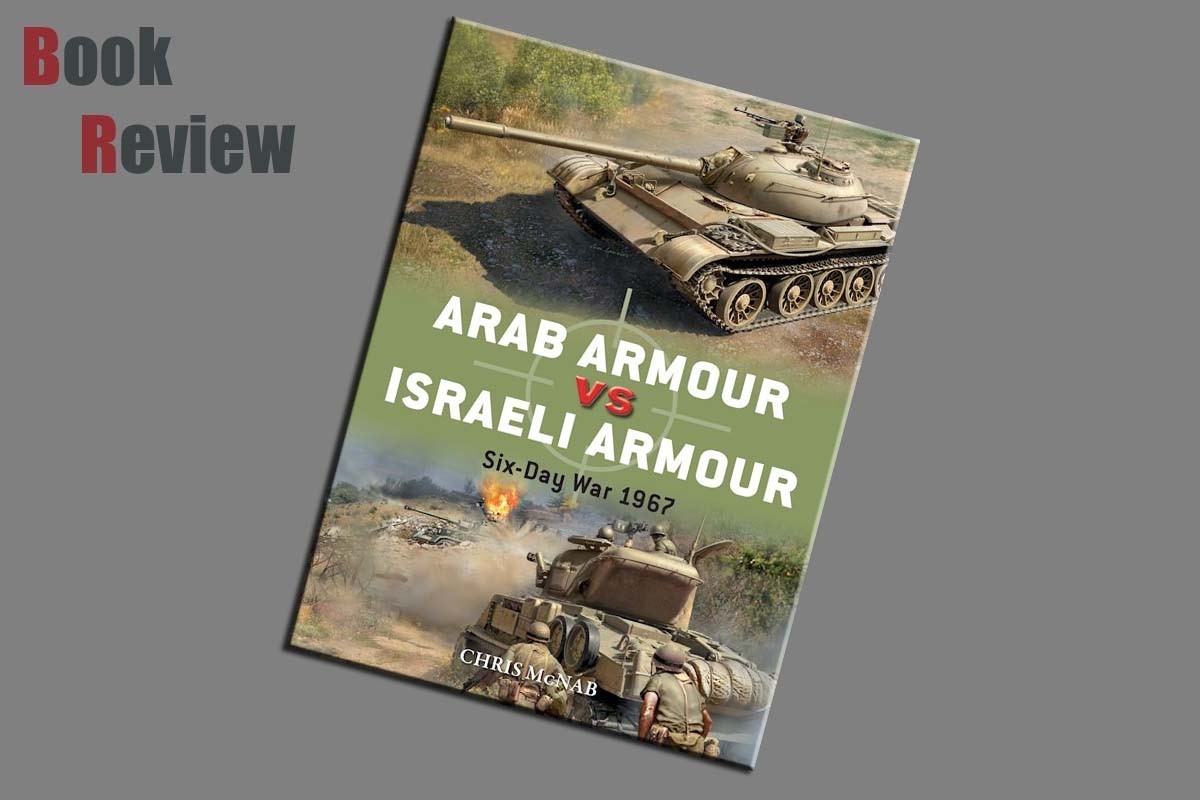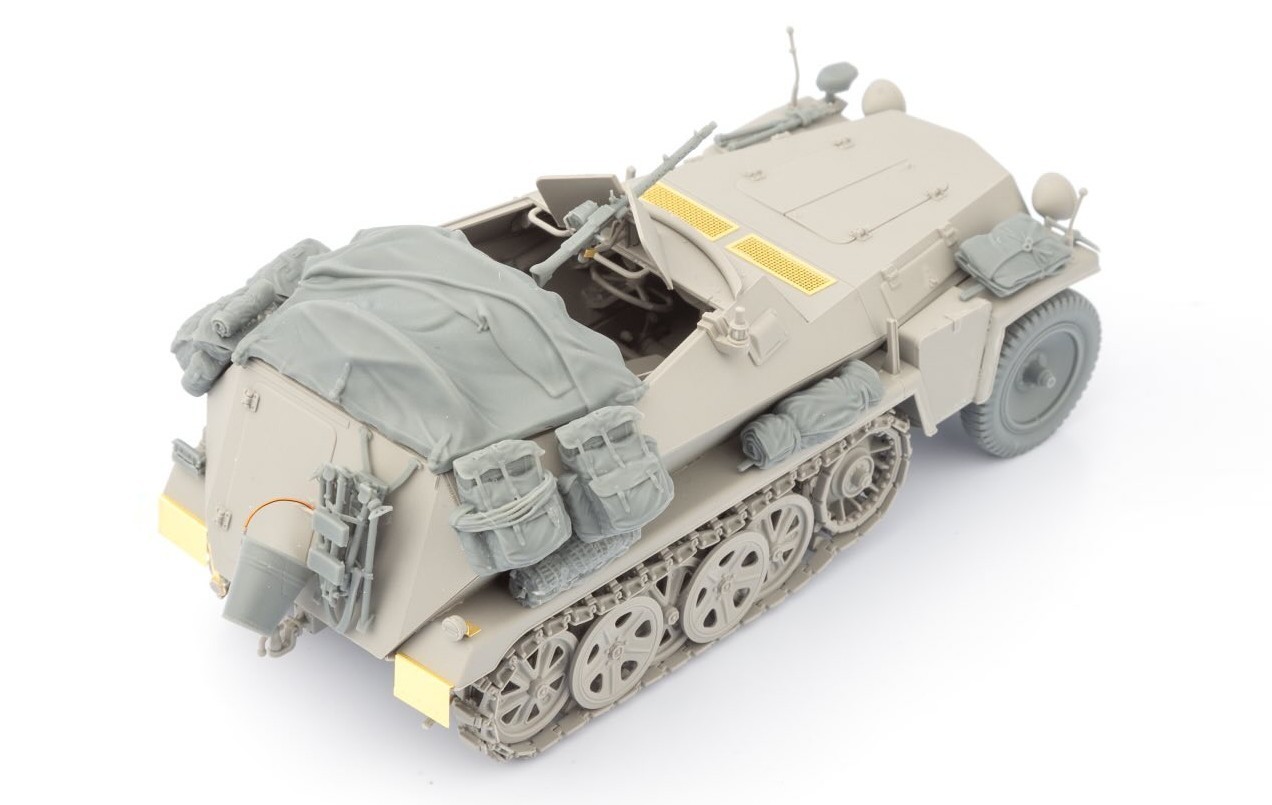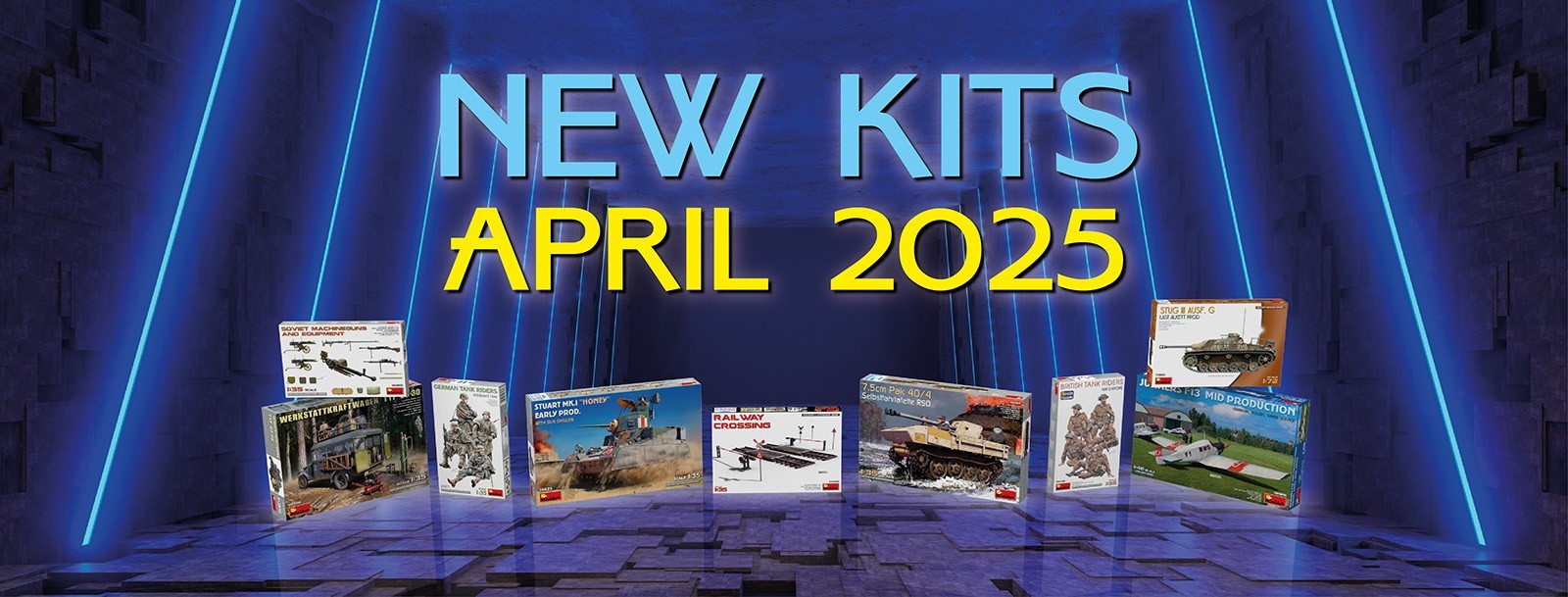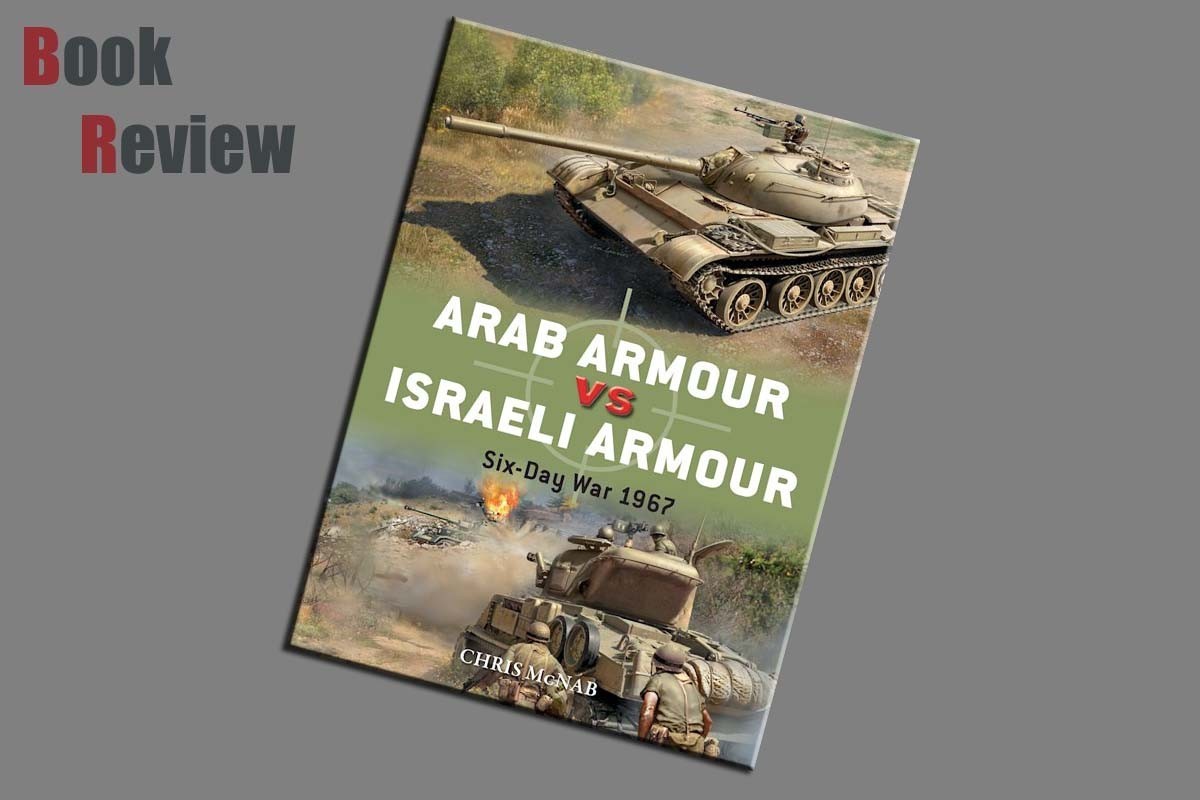
Introduction
"The Six-Day War in 1967 was a lightning Israeli campaign that changed the face of the Middle East. Israel's armoured brigades, despite being heavily outnumbered on paper by Arab AFVs, managed to dominate the Arab forces tactically and technologically, through excellent gunnery and decentralized battlefield leadership. The fighting took place on three different fronts: the Sinai Front, the Jordanian Front and the Golan Heights. Each presented its own unique set of tactical and terrain challenges, from the long-range battles between massed Egyptian and Israeli armour in the scorching flatlands of the Sinai Desert, to relatively close-quarters engagements across steep and narrow terrain in the Golan Heights."
Basics: 80 pages, with maps, tables, side bars, photographs, and more!
Table of Contents:
Introduction
Chronology
Design and Development
The Strategic Situation
Technical Specifications
The Combatants
Combat
Analysis
Conclusion
Bibliography
Index
Review
A very balanced analysis of Arab armour against Israeli armour in the Six Day War, 1967, where, on paper, Israeli should have lost a couple of times over... however, the crux of the matter is buried in 'Analysis', page 74 under 'Leadership', which is worth quoting in full here, "On the IDF side, by contrast, the standards of armour leadership were superb at every level. The ugdah commanders - Tal, Yoffe, and Sharon - were outstanding men of war, who wielded their armour with all the textbook ingredients of victory: surprise, speed, and tempo (some crews operated for 60 hours straight without sleep), firepower, manoeuvre. But the high levels of tactical training that ran down through all the ranks of the IDF meant that Israeli armoured units remained highly resilient in the face of officer losses. The distribution of the mission objectives, down to the lowest levels and the tacit permission to adapt plans and objectives on the hoof, meant that the subordinates would simply pick up the baton and keep the operation moving."
And, page 45: "Israeli tank superiority was due, in part, to the nature of the individual members." Weller, Jac, "Israeli armour: lessons from the Six Day War", Military Review, November 1971.
Going into the war, you'd expect Israel to of taken a beating; on paper, less tanks, inferior tanks, and fighting on three fronts. However, as evidenced by history, and the quote above, leadership and the quality of personnel carried the day. An example is that IDF tankers, in 90mm gunned Pattons, shot up IS-3 tanks with a 122mm gun, at the limits of their gun's range , negating any advantage the Egyptians may have had. And demonstrated the flexibility to take advantage of an opening in the battle, evidenced by the fact that IDF tank commanders fought from the hatch, not buttoned down like the opposition did, allowing the Israeli commanders to 'read' the complete battlefield, and exploit any weaknesses identified. As opposed to the Arabs, who had to contend with a centralised decision making committee to do anything remotely exciting.
Conclusion
The book consists of a well balanced and well presented analysis of tanks used by both sides, including a look at the projectiles as fired by the IS-3, page 44. Tanks covered include (for the Israelis) M52 Super Sherman, AMX 13, M48 Pattons, and Sho't Meteors; and (for the Arabs), T-34/85, T-54/55, PT-76, and IS-3. The Panzers of Syria are only briefly mentioned.
The narrative is supported by some great images, a table or two, maps, side bars, and photographs.
Easily recommended to persons wanting to model this war, or learn about it in a brief read you'd finish over two days. It is not a comprehensive, in-depth analysis, but sufficient to get a grasp of what was going on, and understand how one army beat three simultaneously.
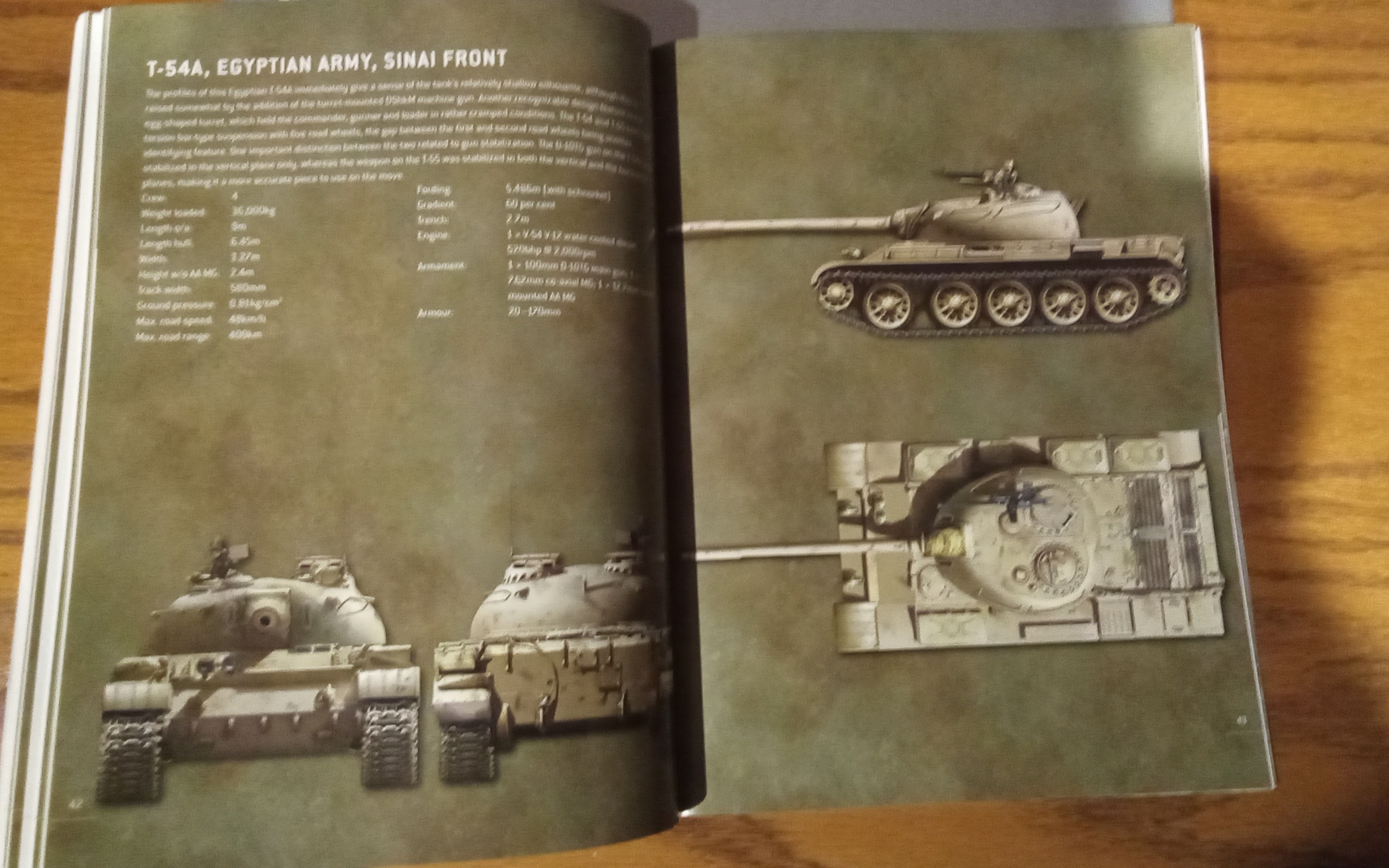
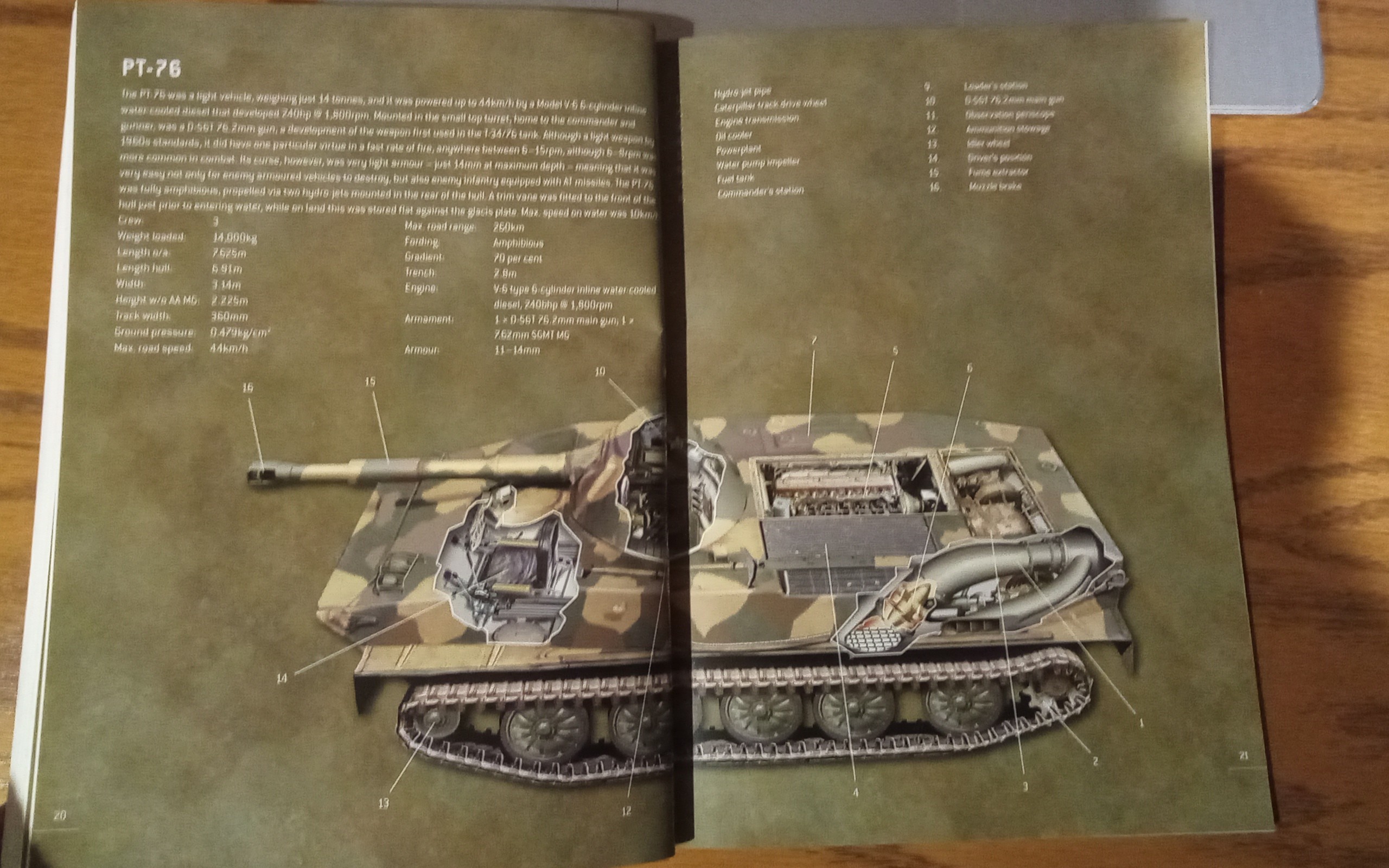
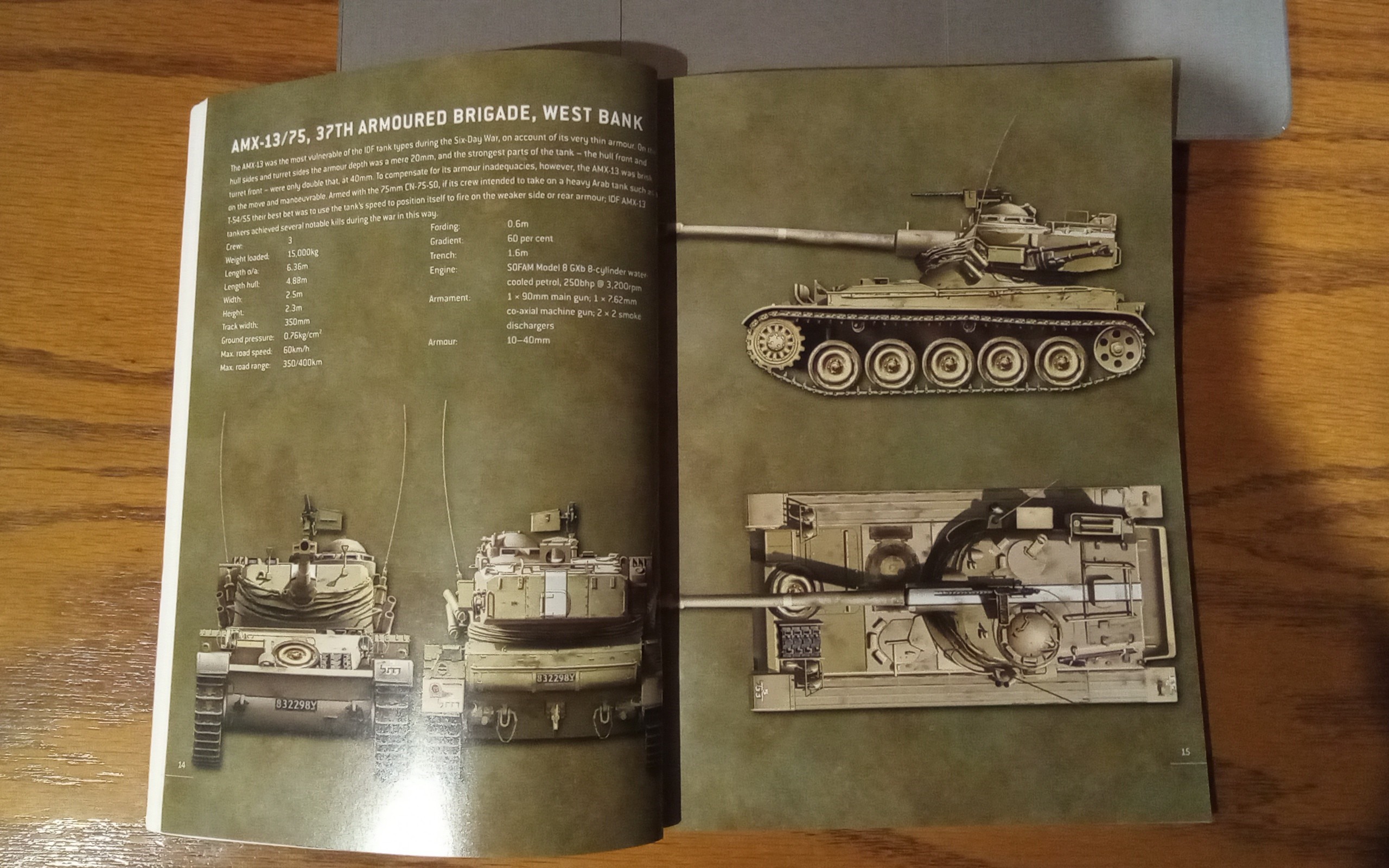
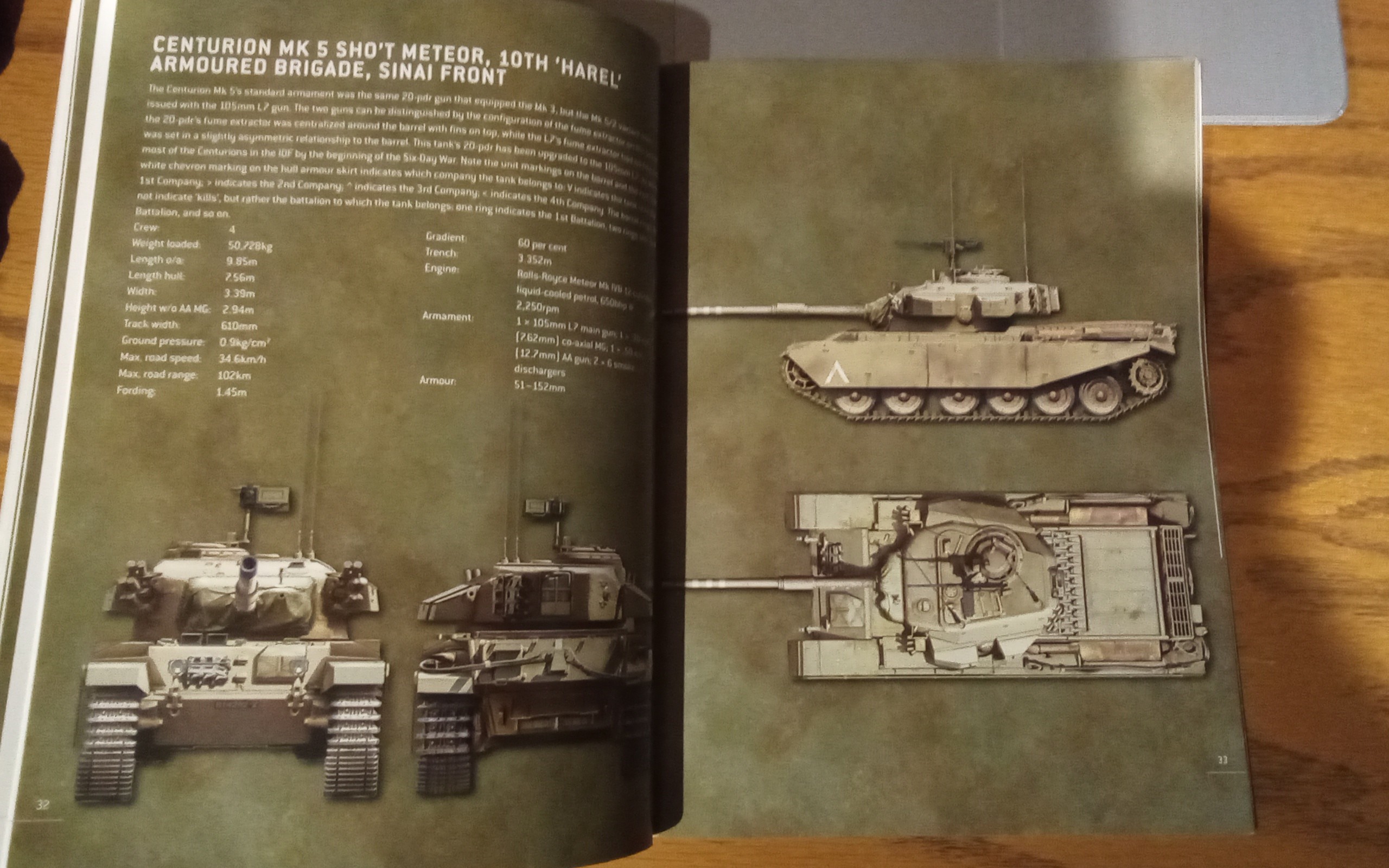
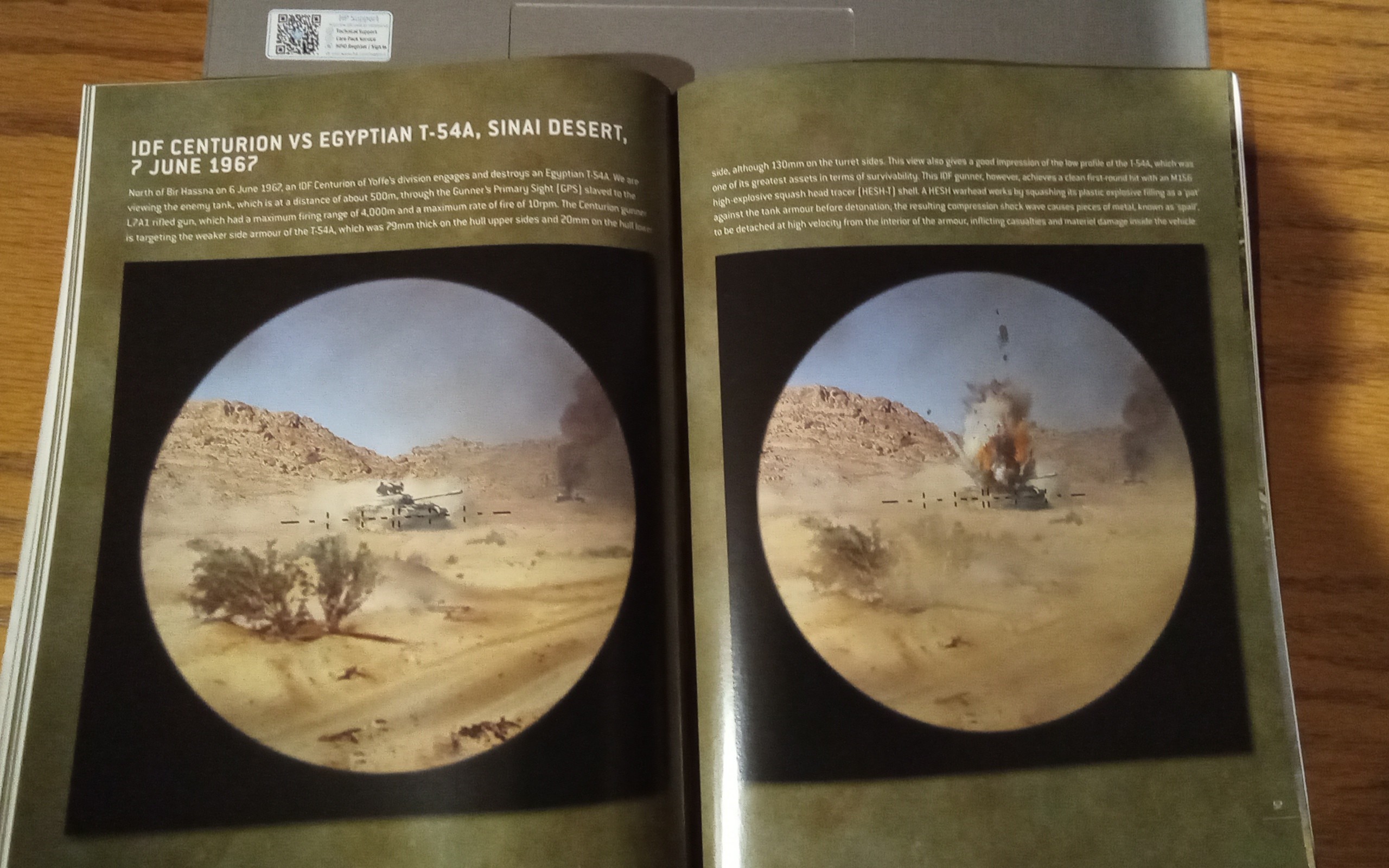
This is what happened, in words

Sherman meets Panzer IV. You know the rest.

This is what happened, in a map.
